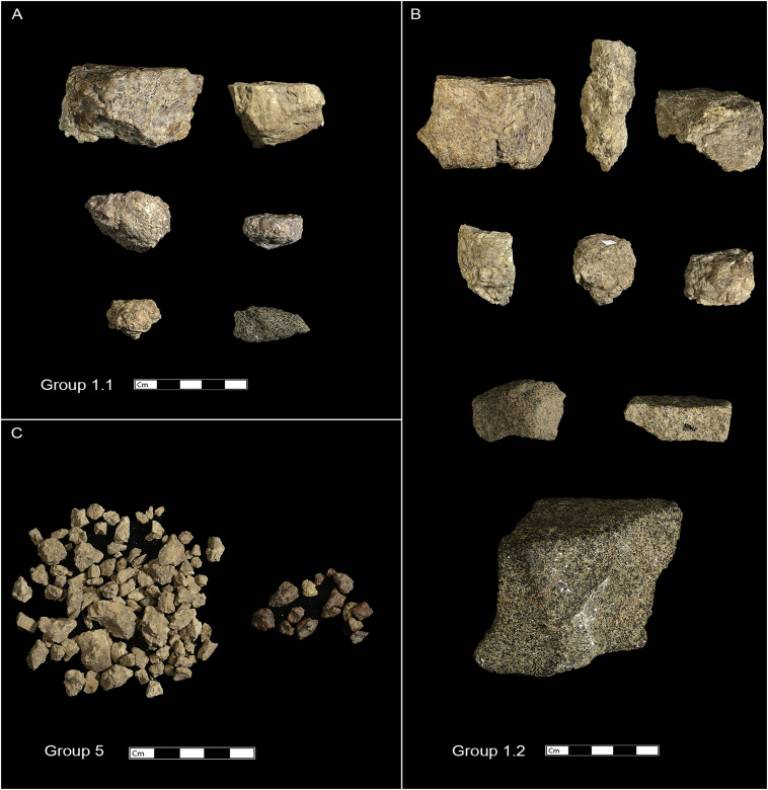Revisiting Panda 100, the first archaeological chimpanzee nut-cracking site
22 September 2018
Archaeological recovery of chimpanzee Panda oleosa nut cracking tools at the Panda 100 (P100) and Noulo sites in the Taï Forest, Côte d'Ivoire, showed that this behavior is over 4000 years old, making it the oldest known evidence of non-human tool use.
 In 2002, the first report on the lithic material from P100 was directly compared to early hominin stone tools, highlighting their similarities and proposing the name 'Pandan' for the chimpanzee material. Here we present an expanded and comprehensive technological, microscopic, and refit analysis of the late twentieth century lithic assemblage from P100. Our re-analysis provides new data and perspectives on the applicability of chimpanzee nut cracking tools to our understanding of the percussive behaviors of early hominins. We identify several new refit sets, including the longest (>17 m) hammerstone transport seen in the chimpanzee archaeological record. We provide detailed evidence of the fragmentation sequences of Panda nut hammerstones, and characterize the percussive damage on fragmented material from P100. Finally, we emphasize that the chimpanzee lithic archaeological record is dynamic, with the preservation of actual hammerstones being rare, and the preservation of small broken pieces more common. P100 - the first archaeological chimpanzee nut cracking lithic assemblage - provides a valuable comparative sample by which to identify past chimpanzee behavior elsewhere, as well as similar hominin percussive behavior in the Early Stone Age.
In 2002, the first report on the lithic material from P100 was directly compared to early hominin stone tools, highlighting their similarities and proposing the name 'Pandan' for the chimpanzee material. Here we present an expanded and comprehensive technological, microscopic, and refit analysis of the late twentieth century lithic assemblage from P100. Our re-analysis provides new data and perspectives on the applicability of chimpanzee nut cracking tools to our understanding of the percussive behaviors of early hominins. We identify several new refit sets, including the longest (>17 m) hammerstone transport seen in the chimpanzee archaeological record. We provide detailed evidence of the fragmentation sequences of Panda nut hammerstones, and characterize the percussive damage on fragmented material from P100. Finally, we emphasize that the chimpanzee lithic archaeological record is dynamic, with the preservation of actual hammerstones being rare, and the preservation of small broken pieces more common. P100 - the first archaeological chimpanzee nut cracking lithic assemblage - provides a valuable comparative sample by which to identify past chimpanzee behavior elsewhere, as well as similar hominin percussive behavior in the Early Stone Age.
Revisiting Panda 100, the first archaeological chimpanzee nut-cracking site
T. Proffitt, M. Haslam, J. F. Mercader, C. Boesch, L. V. Luncz
DOI: 10.1016/j.jhevol.2018.04.016
 Close
Close

